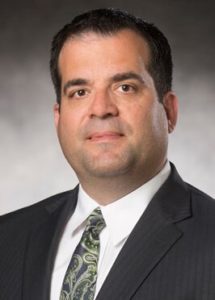
Subchapter V: Lifeline for Small Business Debtors, not a Sinking Ship for Creditors
Charles N. Persing, CPA/CFF, CFE, CIRA, CVA
Joseph H. Lemkin, Esq.
Congress passed the Small Business Reorganization Act of 2019 (SBRA) to provide small businesses with an expeditious and cost-effective reorganization alternative to a traditional chapter 11 case. Codified as Subchapter V of Chapter 11 of the Bankruptcy Code, SBRA became effective on February 19, 2020. While providing small businesses with a streamlined lifeline, Creditors also have opportunities to protect their rights and interests throughout the Subchapter V proceedings.
Benefits of Subchapter V
Subchapter V contains many provisions which facilitate a streamlined and cost-effective process for small business debtors. First Subchapter V provides a short deadline – only 90 days from filing – within which a plan of reorganization must be filed. This is unlike traditional chapter 11 cases where, many times, the plan process languishes and becomes delayed and costly. In Subchapter V, only in very limited circumstances can the ninety-day deadline be extended.
Another benefit for Debtors under Subchapter V is that the Debtor has the exclusive right to file a plan of reorganization, without any risk of Creditors and other constituents filing a competing plan of reorganization. Also, unlike traditional chapter 11 cases where comprehensive and costly disclosure statements must be filed with a proposed plan, there is no such requirement in Subchapter V. Subchapter V cases also generally do not have an official committee of unsecured Creditors, unless specifically ordered by the Court. In traditional chapter 11 cases, Creditor committee professionals add significant costs which must be paid by the Debtor and many times interpose objections and other hurdles which make reorganization difficult and time consuming. Finally, unlike traditional chapter 11 cases, there is no absolute priority rule. This means owners can retain their equity interest in a company without providing new value and without creditors being paid in full.
Value Added By Subchapter V Trustee
In every Subchapter V Case, a trustee is appointed by the Office of the United States Trustee (“USTO”). The USTO chooses a trustee from a panel that includes attorneys, CPAs and other professionals with a variety of skillsets. In many instances, a trustee is chosen based upon the specific needs of a case. The Subchapter V Trustee plays a role in monitoring the Debtor’s business and case activities while the case is pending. This may include review of the Debtor’s: (i) cash management, (ii) professional retentions, (iii) budgets; and (iv) operating reports.
Most importantly, the Subchapter V trustee’s primary duty is to facilitate a consensual and confirmable plan of reorganization. The trustee plays a key role in bringing all constituents to the table to arrive at such a plan. Communications by the Subchapter V Trustee with trade vendors, secured Creditors, landlords and other constituents are critical to arriving consensual plan. Unlike traditional chapter 11 cases where interactions are primarily among attorneys. In the Subchapter V environment, the neutral trustee becomes intimately involved in discussions as to how to best resolve issues among the various constituents. In addition to serving as a neutral intermediary, the Subchapter V Trustee will also ensure that Debtors are complying with technical obligations of Subchapter V, such as by ensuring that proper liquidation analyses and disposable income calculations are prepared. Simply put, the Subchapter V Trustee is an integral cog to ensure that the Subchapter V process is efficient and cost-effective.
Creditor Involvement In Subchapter V
Although the Subchapter V process is geared to helping the Debtor arrive at a cost effective and streamlined plan of reorganization – this does not mean that creditors must stand on the sidelines. There are many opportunities for Creditors to voice their concerns and enforce their rights in the context of a Subchapter V case. Creditors should be mindful of the expedited nature of the Subchapter V process and need to act quickly to enforce their rights. Of course, as in any bankruptcy, Creditors should timely file claims reflecting the appropriate amounts due and their priority. Among other specific Subchapter V concerns, Creditors should be mindful of the following issues when a case is filed.
1. Eligibility Issues
The issue of a Debtor’s eligibility to seek Subchapter V protection provides an opportunity for Creditors to be heard at the outset of a case. A creditor can object to a Subchapter V election based upon eligibility requirements. Subchapter V cases are limited to individuals or entities that are engaged in commercial or business activities, with combined total debts not exceeding $7,500,000, not less than 50 percent of which arose from the Debtor’s business activities. The combined total of secured and unsecured debts must be owed as of the date of filing for bankruptcy relief.
Most courts have held that the Debtor bears the burden of establishing Subchapter V eligibility. Courts have considered a variety of eligibility issues including whether non-operating companies are eligible for Subchapter V protection. Courts are not likely to find eligibility where an individual files for Subchapter V protection and the debts relate to a business that has been dissolved. Other non-operational debtors, where a sliver of business activity exists, have been held eligible for Subchapter V relief.
Subchapter V also precludes affiliates of “issuers” from being Debtors under Subchapter V. Broadly read, Courts have interpreted this provision of Subchapter V preclude, an affiliate of a public or private company that issues securities, from being an eligible Debtor. Accordingly, review of a Debtor’s corporate structure may provide an important tool when a Creditor investigates a Debtor’s Subchapter V eligibility. A Creditor’s tactical use of eligibility issues may provide significant leverage in negotiating a potential consensual plan of reorganization.
2. Subchapter V Plan and Discharge
Generally, a Subchapter V Debtor remains in control of its business and is authorized to continue its operations with the ultimate goal of confirming a plan of reorganization. Unlike the traditional chapter 11 plan process, the Debtor is the exclusive party who may propose a plan of reorganization. In a traditional chapter 11 case, Debtors have a limited exclusivity period. Moreover, unlike traditional chapter 11 cases, official committees of unsecured Creditors are generally not appointed in Subchapter V cases. Although unable to propose a plan, and likely not represented by an official committee, Creditor concerns can still be raised and heard. Individual Creditors do have the opportunity to vote on the proposed plan, can object to confirmation, and raise arguments if a proposed plan does not comply with chapter 11 confirmation standards. For example, the plan of reorganization must be “fair and equitable” and may not “discriminate”. Accordingly, if a Creditor feels that it is being discriminated against and/or treated unfairly, it can and should interpose an objection to the confirmation of the proposed plan.
The goal of any Debtor in bankruptcy is to secure a discharge of debts. Certain courts have found that Creditors in Subchapter V cases have weapons unavailable in traditional Chapter 11 cases, which impact the Debtor’s discharge. With respect to confirmed non-consensual Subchapter V plans, section 1192 of the Bankruptcy Code provides for the Debtor to receive a discharge “except any debt . . . (2) of the kind specified in section 523(a) of this title.” Section 523(a) states, “A discharge . . . does not discharge an individual Debtor from …” certain types of debts arising from fraud and other types of intentional misconduct. While in traditional chapter 11 cases, corporate Debtors are able to discharge debts specified in section 523(a), section 1192 appears to provide an opportunity for Creditors to object to the discharge of 523 debts – even by corporate Debtors. This opportunity to advance objections to discharge under 1192 and 523 of the Bankruptcy Code may provide Creditors with another avenue for leverage in securing beneficial treatment in a plan of reorganization.
Conclusion
In conclusion, Subchapter V provides a streamlined and cost-effective collaborative process facilitated by a Subchapter V Trustee, with the ultimate goal of arriving at a consensual plan of reorganization with Creditors. While the Debtor is afforded an expedited process, Creditors are able to and should actively participate in Subchapter V in order to enforce their rights.
About the Authors:

Charles N. Persing, CPA/CFF, CFE, CIRA, CVA
973.530.9181
Mr. Persing is an insolvency and litigation services partner at Bederson LLP in Fairfield, New Jersey. He is a also a Subchapter V Trustee in the Eastern and Southern Districts of New York, and a board member of the National Association of Bankruptcy Trustees (NABT).

Joseph H. Lemkin, Esq.
609.791.7022
Mr. Lemkin is a shareholder at Stark and Stark P.C. in Lawrenceville, New Jersey. He is admitted to practice in New Jersey and New York, and focuses his practice on bankruptcy and creditor’s rights.
continue reading
Related Posts
Bederson announces the retirement of friend and colleague, James
Bederson LLP is pleased to announce the promotion of Michelle




